Table of Contents
Among the multitude of new laptops unveiled at CES this year, Asus are updating their popular lineups of performance thin-and-light computers, the ROG Zephyrus G14 and the ROG Zephyrus G16.
These aren’t new designs for 2025, but rather hardware updates and slight refinements of the 2024 generations already reviewed here on the site in multiple variants.
In just a few words, the 2025 Asus Zephyrus G14 GA403W remains a compact and lightweight 14-inch laptop that packs plenty of punch, now with a Ryzen AI 9 processor and up to Nvidia GeForce RTX 5080 graphics at 110W TGP, alongside a beautiful 120Hz OLED display and competitive inputs, punchy speakers and plenty of ports for its size.
The 2025 Asus Zephyrus G16 GU605 is a portable 16-inch laptop powered now by an Intel Core Ultra 9 285H Arrow Lake processor, with up to Nvidia GeForce RTX 5090 graphics and up to 64 GB of RAM, alongside a 240Hz OLED display and slight improvements of everything already offered by the smaller Zephyrus variant, such as even richer speakers and extra ports.
We’ll review these 2025 Zephyrus updates over the next few weeks and months, but inthe meantime, here’s a quick summary of what’s new and changed for this year.
2025 Asus ROG Zephyrus G14 GA403W, vs 2024 GA14 GA403U
| 2025 ASUS ROG Zephyrus G14 GA403W | 2024 ASUS ROG Zephyrus G14 GA403U – review, official page | |
| Display | 14-inch, 16:10, non-touch, glossy, OLED, Nebula 2.8K 120Hz 0.2ms, 500-nits SDR ??, 100% DCI-P3 |
14-inch, 16:10, non-touch, glossy, OLED, Nebula 2.8K 120Hz 0.2ms, 400-nits SDR, 100% DCI-P3 |
| Processor | AMD Strix Point, Ryzen AI 9 HX 370, 12C/24T, up to 5.1 GHz AMD Krackan Point configurations to follow |
AMD Hawk Point Zen4, Ryzen 9 8945HS 8C/16T |
| Video | Radeon 890M + Nvidia RTX 5070Ti (up to 110W ?? with Dyn Boost) on the GA403WI configuration Radeon 890M + Nvidia RTX 5080 (up to 110W ?? with Dyn Boost) on the GA403WZ configuration with MUX, Advanced Optimus, and G-Sync |
Radeon 780M + Nvidia RTX 4070 (up to 90W with Dyn Boost) on the GA403UI configuration Radeon 780M + Nvidia RTX 4060 (up to 90W with Dyn Boost) on the GA403UU configuration with MUX, Advanced Optimus, and G-Sync |
| Memory | up to 64 GB LPDDR5x-7500 (onboard) | 16/32 GB LPDDR5x-6400 (onboard) |
| Storage | 1x PCIe 4.0, M.2 2280 slot | 1x PCIe 4.0, M.2 2280 slot |
| Connectivity | WiFi 7 2×2 with Bluetooth 5.4 | WiFi 6E 2×2 with Bluetooth 5.3 (MediaTek MT7922) |
| Ports | left: DC-in, HDMI 2.1 FRL, 1x USB-C 4.0, 1x USB-A 3.2, audio jack right: 1x USB-A 3.2, 1x USB-C gen2 with data&DP, microSD UHS-II card reader |
left: DC-in, HDMI 2.1 FRL, 1x USB-C 4.0, 1x USB-A 3.2, audio jack right: 1x USB-A 3.2, 1x USB-C gen2 with data&DP, microSD UHS-II card reader |
| Battery | 73 Wh ??, 200/240 W power adapter, USB-C charging up to 100W | 73 Wh, 180 W power adapter, USB-C charging up to 100W |
| Size | 310 mm or 12.24” (w) x 220 mm or 8.66 (d) x from 15.9 or .63” (h) | 310 mm or 12.24” (w) x 220 mm or 8.66 (d) x from 15.9 or .63” (h) |
| Weight | from 1.55 kg (3.46 lbs) + charger | 1.5 kg (3.3 lbs) + charger |
| Extras | clamshell format with 130-degree hinges, 2025 model is slightly thicker and heavier than the 2024 version, glossy OLED non-touch display, single-zone RGB keyboard with glass touchpad, 1080p webcam with IR, no fingerprint sensor, 6x speakers, tri-fan cooling with rear heatsinks and liquid metal compound, available in Platinum White or Eclipse Gray variants |
|
On first look, the 2025 G14 is mostly a hardware update of the 2024 model, built on the same chassis and offering the same features. And that’s true, but with an exception, as the 2025 chassis gets a redesigned D-Panel that makes the laptop a little thicker, while ensuring extra space inside which Asus used to update the cooling module in order to allow for higher TGP in sustained GPU loads, with Turbo Boost. It’s still unclear to me whether the TGP for the 2025 refresh is up to 110W or up to 100W, but that’s still a bump from the 90W TGP on the existing generation.
Of course, all the other specs make an even greater difference in the performance output of this series, with a Ryzen AI 9 HX 370 processor and up to RTX 5080 graphics, as well as support for faster LPDDR5x-7500 RAM. There’s still no 64 GB configuration, but I’m sure many will salute the decision to up the GPU specs to a higher-tier option, as the existing G14 only went up to a mid-tier RTX 4070. Of course, that 5080 model won’t come cheap, and I’d keep a close eye on reviews for details on the thermal performance with these new chips and the higher power settings, especially knowing the limitations in thermal capacity of the 2024 Zephyrus G14 model. I’d still expect this to run quite hot in games and sustained graphics loads, and you’ll most likely want to keep it on a stand to maximize airflow and cooling.
As far as performance goes, we already know what to expect from the Ryzen AI 9 Strix Point platform versus the Hawk Point Ryzen 9 8945HS in this sort of high-powered chassis: 15-20% increase in sustained CPU performance, and 10% gains in single-core loads. The updated RAM is going to matter as well in certain applications, and the GPU is the elephant in the room that everyone is looking forward to test. Given there’s now a new xx80 class GPU configuration available, we should realistically expect 50% improved graphics performance for the top-tier 2025 G14 over the top 2024 version.
On the other hand, I’m hearing that certain lower-tier and thus more affordable versions of the G14 will be available as well, built on AMD Krackan Point hardware, and those should attract a wider crowd toward the G14 this year. From the little we know so far, Krackan APUs come with either 8x Zen5 (c) Cores, but lack the more powerful Zen5 Cores offered by the Strix Point APUs, or in 4x Zen5 with 4x Zen5 (c) configurations. Hence, these aren’t going to be quite as powerful in sustained CPU loads, but should handle daily chores fine with an emphasis on efficiency and competitive pricing. Krackan hardware is also bundling RDNA 3.5 graphics (similar to the Radeon 880M and 890M), 40+ TOPS NPUs, and support for DDR5-5600 memory. We’ll update this section once we know more about these Krackan Point configurations of the G14.
Back to the 2025 G14s, it’s worth noting that Asus is bundling these with higher-capacity 200/240W chargers, and thus slightly heavier and larger. Some sources also mentioned a 90W battery, but that’s most likely an error and you’re still getting a 73 Wh battery just like last year.
These aside, everything else is the same between the two model years. The chassis is still premium and CNC-milled, there’s still that ugly chromed Slash Lighting lightbar part on the lid, and Asus still offers the lineup in either Gray or light-silver color versions. I prefer the Gray, even if it smudges fairly easily, as it does a better job at hiding away the light bar and offers better contrast on the keyboard. Speaking of, both the keyboard and touchpad are excellent here, and the OLED display and punchy speakers add up to the whole package.
Overall, I’m excited about these refreshed Zephyrus G14 models. Some of my complaints about the initial series are still there, like the limited screen angle and probably the warm thermals under load (that’s to be tested), but others were addressed and Asus now offer this G14 generation in a much broader range of configurations, both in terms of capabilities, and in terms of pricing.
2025 Asus ROG Zephyrus G16 GU605, vs 2024 GA14 GA403U
Asus released an AMD Ryzen AI version of the Zephyrus G16 GA605 around mid-2024, and that doesn’t seem to get a refresh yet. Instead, the Intel-based G16 GU605 gets a hardware bump now in early 2025, with Core Ultra Arrow Lake processors and RTX 5000 graphics.
| 2025 ASUS ROG Zephyrus G16 GU605C | 2024 ASUS ROG Zephyrus G16 GU605M – review | |
| Display | 16-inch, 16:10, non-touch, OLED QHD+ 2560 x 1600 px , 240 Hz VRR 0.2ms, 400 nits SDR, 100% DCI-P3 colors, glossy, anti-glare |
|
| Processor | Intel Arrow Lake-H, Core Ultra 9 285H, 16C/16T | Intel Meteor Lake, Core Ultra 9 185H, 16C/22T |
| Video | Arc + up to Nvidia RTX 5090 16GB (up to 130W with Dyn Boost) with MUX, Advanced Optimus, and GSync |
Arc + up to Nvidia RTX 4090 16GB (up to 115W with Dyn Boost) with MUX, Advanced Optimus, and GSync |
| Memory | up to 64 GB LPDDR5x-7467 (onboard) | 32 GB LPDDR5x-7467 (onboard) |
| Storage | 2x M.2 PCI 4.0 x4 slots | 2x M.2 PCI 4.0 x4 slots |
| Connectivity | WiFi 7 2×2 with Bluetooth 5.4 | WiFi 6E 2×2 with Bluetooth 5.3 |
| Ports | left: DC-in, HDMI 2.1 FRL, 1x USB-C Thunderbolt 4.0, 1x USB-A 3.2, audio jack right: 1x USB-A 3.2, 1x USB-C gen2 (with data, DP, PD), SD UHS-II card reader |
|
| Battery | 90 Wh, 240 W power adapter, USB-C charging up to 100W | |
| Size | 354 mm or 13.94” (w) x 246 mm or 9.69 (d) x from 14.9 or .58” (h) | 354 mm or 13.96” (w) x 246 mm or 9.68 (d) x from 14.9 or .58” (h) |
| Weight | from 1.95 kg (4.3 lbs) for the RTX 5080/5090 version, .72 kg (1.58 lbs) for the 240W main power brick and cables, EU version |
from 1.95 kg (4.3 lbs) for the RTX 4080/4090 version, .72 kg (1.58 lbs) for the 240W main power brick and cables, EU version |
| Extras | clamshell format with a 130-degree hinge, single-zone RGB keyboard and glass touchpad, 6x speakers – 10W, FHD webcam with IR, dual-fan vapor-chamber cooling on the 5080/5090 models, heatsinks on the mid-tier models, available in Platinum White or Eclipse Gray variants |
|
Our existing reviews of the 2024 Zephyrus GU605 models (here and here) should tell you everything you’ll need to know about these designs. They’re premium builds available in silver or gray colors, with good inputs, lots of ports, a beautiful 1600p 240Hz OLED display, and punchy audio, arguably the best available in a Windows laptop, and overall better than on the G14 due to the larger physical size of the speakers allowed by the larger 16-inch chassis.
Here are some pics of the two G16 colors.
And for what is worth, here’s how the 14-inch G14 compares to the 16-inch G16 in size.
However, it’s important to be aware that Asus is still offering the 2025 G16s in two versions, one that’s a little thicker and heavier and comes with vapor-chamber cooling, meant for the highest-tier configurations, and another that’s a tad lighter than comes with more traditional cooling with an array of heatpipes, meant for the mid-range configurations. As far as I understand, only the higher-tier configurations launch at the beginning of the year, with the others coming a few months later.
Here’s the vapor chamber cooling in the G16, as well as the motherboard, speakers, battery, etc. That’s for the 2024 G16 model, but the 2025 refresh should be nearly the same.
Speaking of, the 2025 configurations include an Intel Arrow Lake-H Core Ultra 9 285H processor, up to 64 GB of LPDDR5-7467 memory (2x the amount offered on the 2024 generations), and up to RTX 5090 graphics from Nvidia at up to 130W TGP. That’s also a 10% bump in power over than 115W TGP of the RTX 4090 model from 2024, so we can expect a decent boost in graphics capabilities between generations, hopefully of at least 20%. We’ll need to test the associated thermals with this increase in TGP, though, but the vapor-chamber cooling did well in the previous models, so I’d expect it will handle the updated hardware fine as well.
On the CPU side, though, Arrow Lake-H is most likely slower in sustained CPU loads than the Meteor Lake Core Ultra 9 185H, due to the differences between the two platforms. The Arrow Lake-H Core Ultra 9 comes with 16 Cores, 6x Lion Cove P-Cores, 8x Skymont E-Cores and 2x Crestmont LPE-Cores. Based on what I know so far, these add up to only 16 Threads, and not 22 Threads as on Meteor Lake. Instead, the Lion Cove P-Cores work at higher speeds, while the E and LPE Cores should help with efficiency on battery power, at least based on what we already know from our reviews of Intel Lunar Lake implementations of these same Cores in lower TDP products.
That’s about it for now. I’m looking forward to testing these out in our reviews and especially find out how the RTX 5000 GPUs perform in these sort of mid-powered thin-and-light laptop designs. In the meantime, let me know what you guys think of these refreshes.

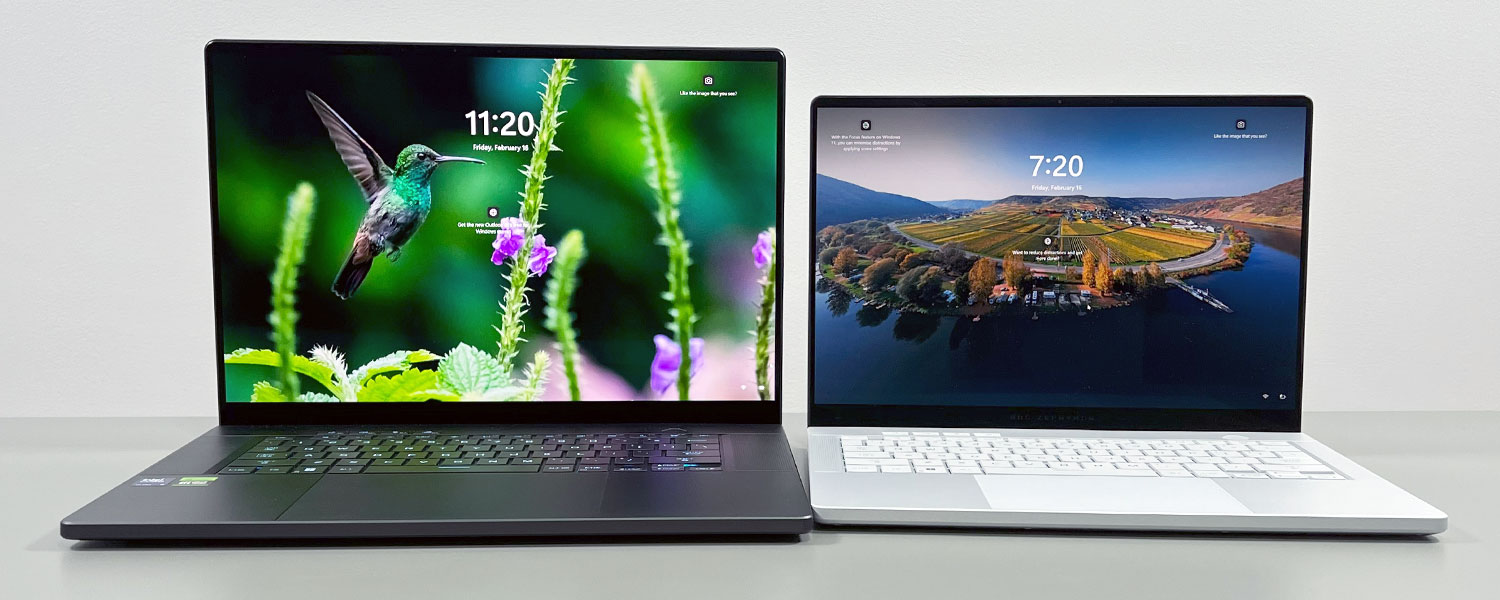
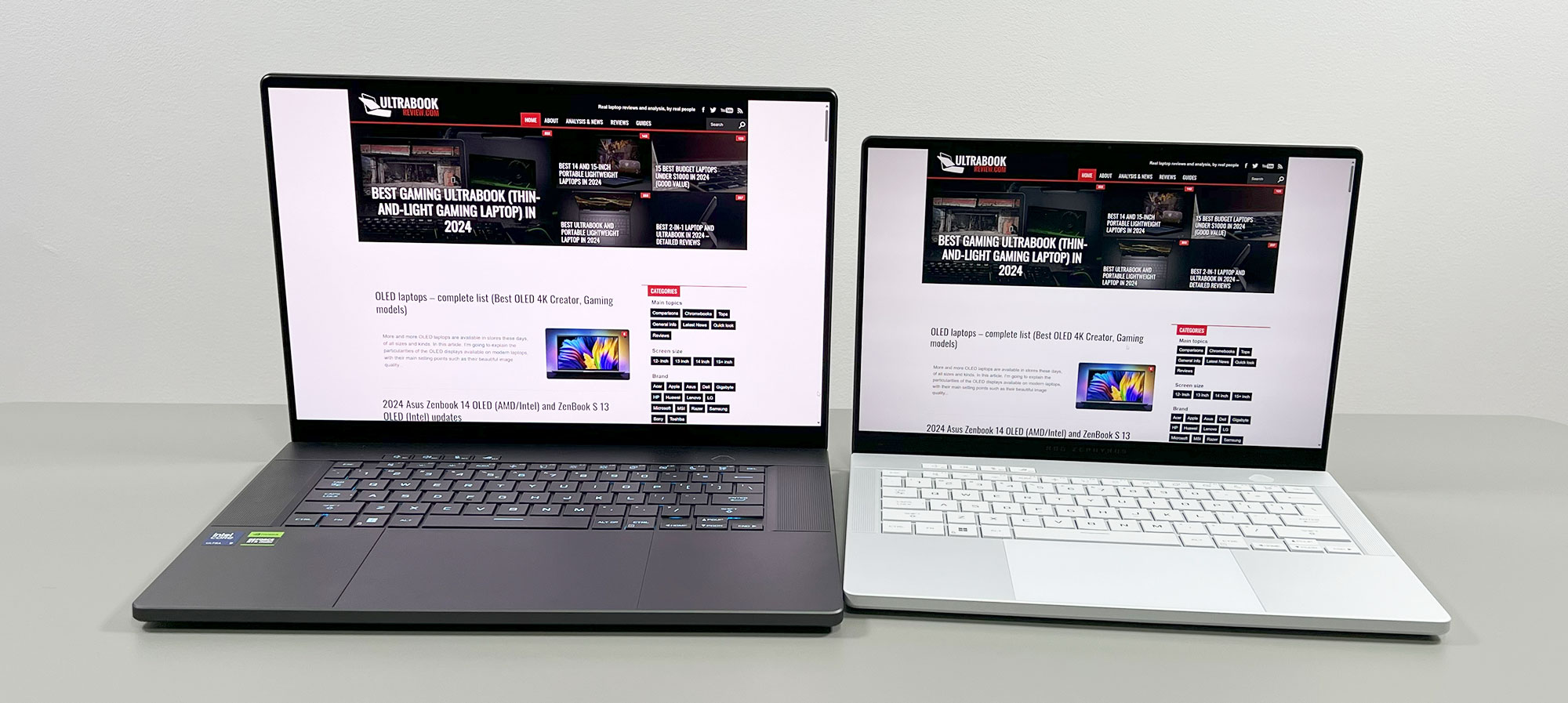
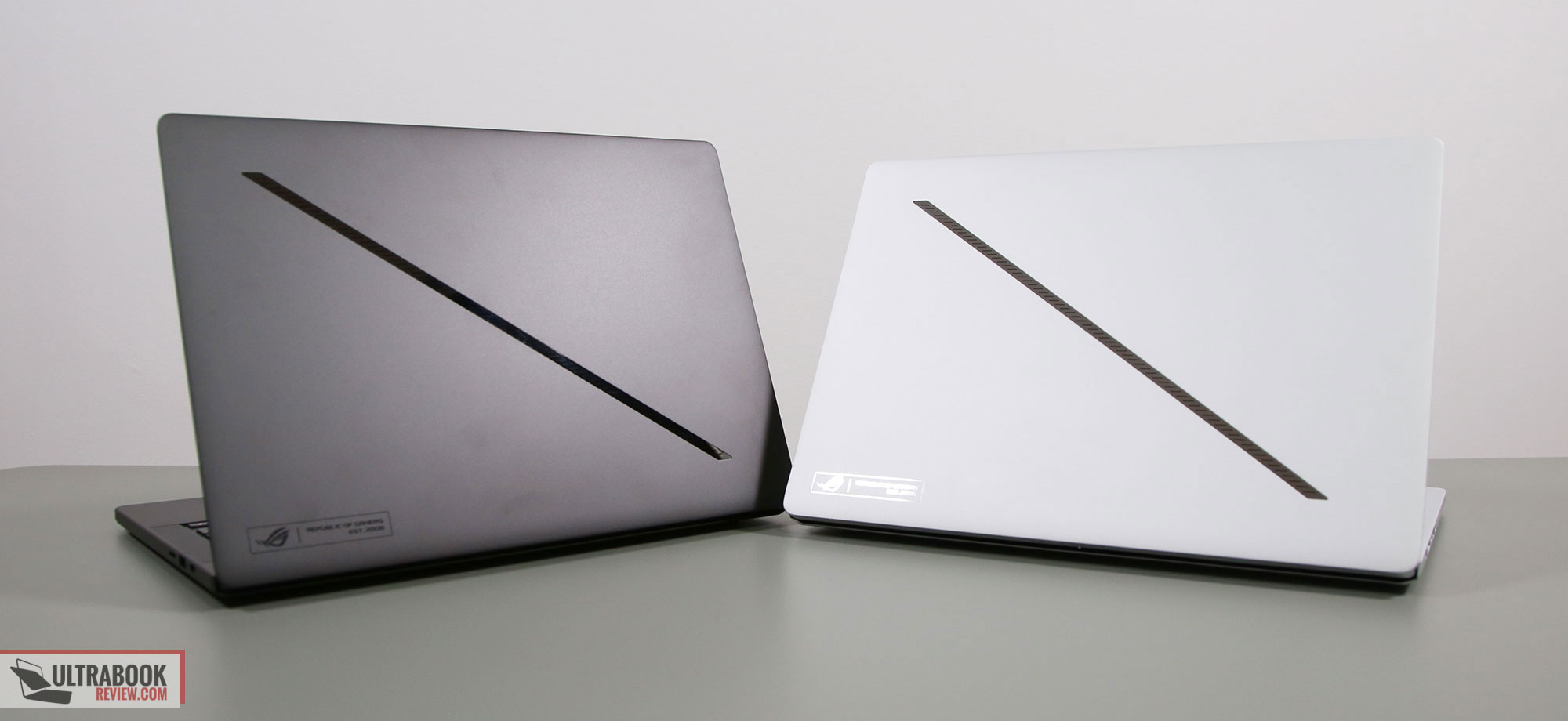



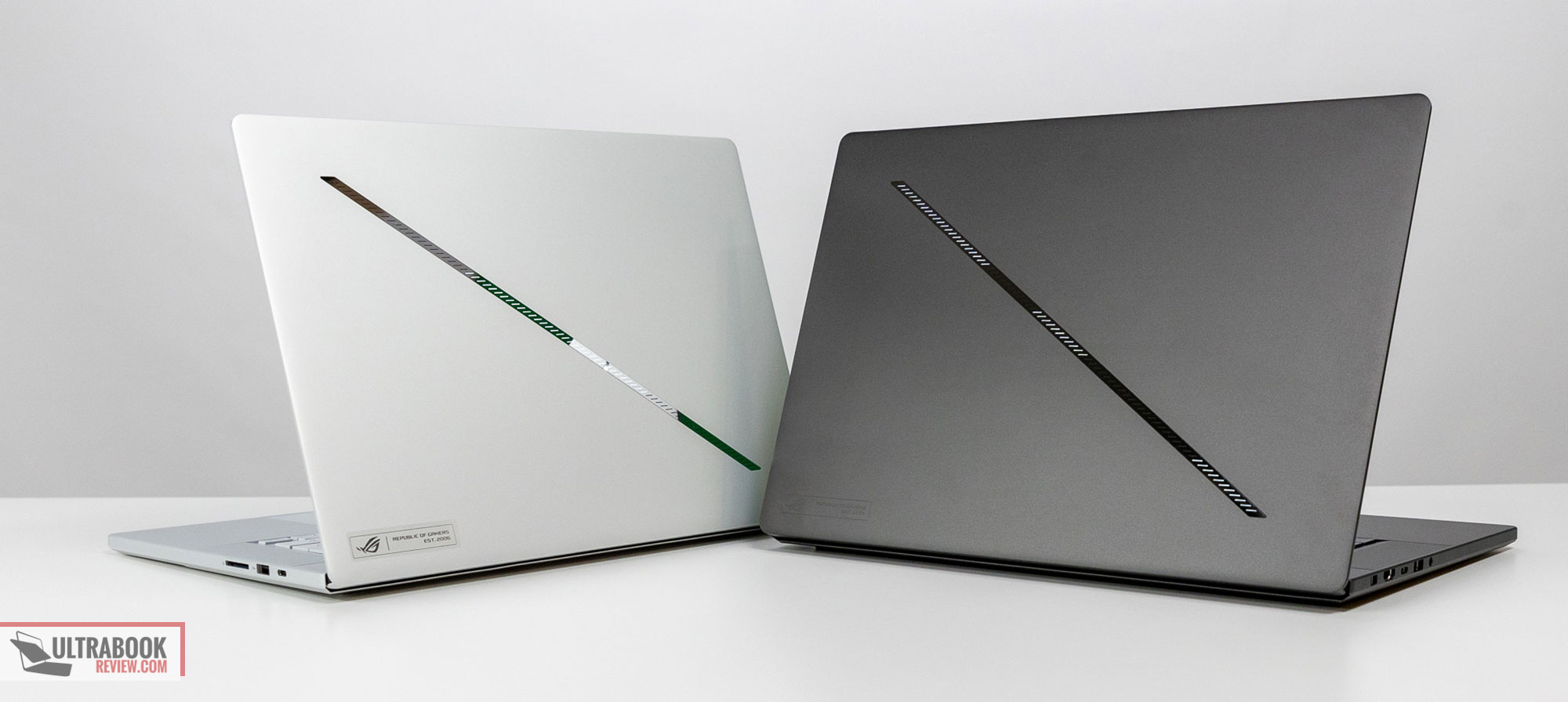


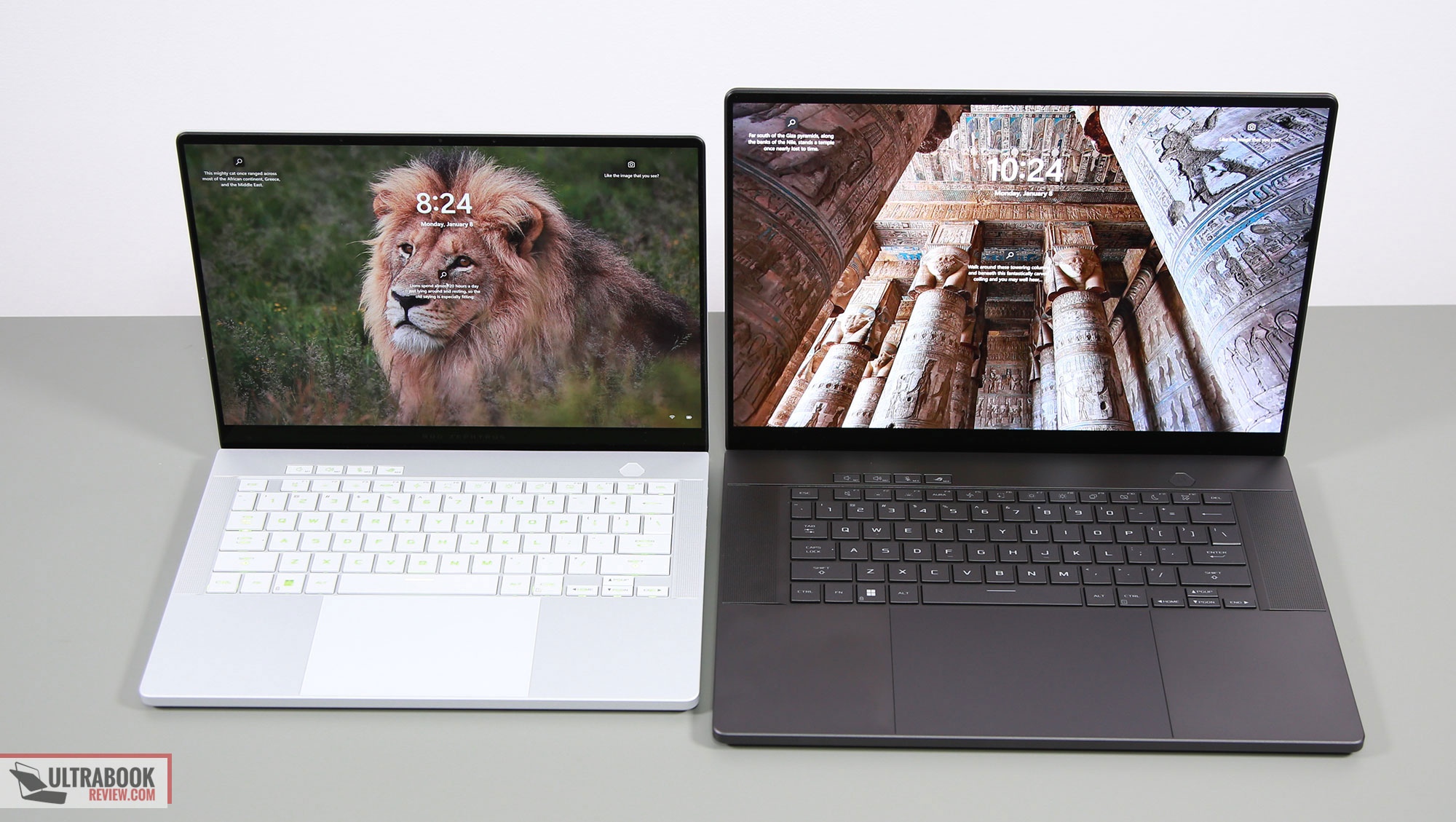
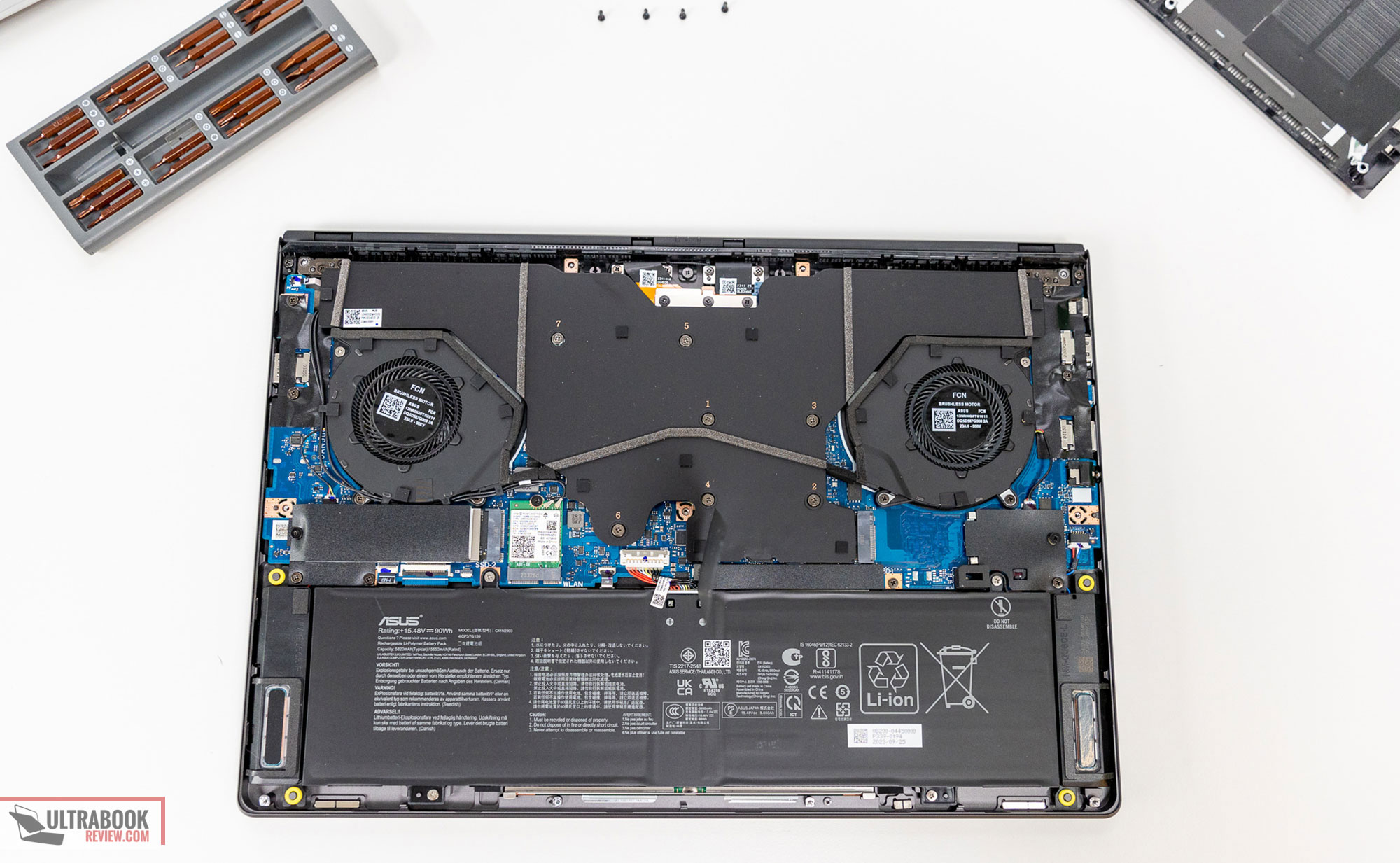


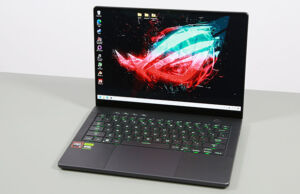



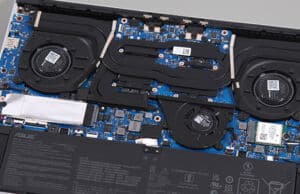
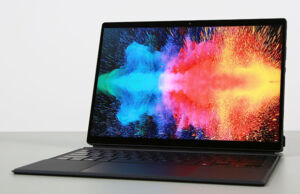



GZ
January 8, 2025 at 12:46 pm
A small correction: the G14 model is available with 64 GB of memory. On the ASUS website, the GA403WW model has this amount of RAM. https://rog.asus.com/laptops/rog-zephyrus/rog-zephyrus-g14-2025/spec/
Andrei Girbea
January 8, 2025 at 1:07 pm
Thanks, Updated!
nox
March 17, 2025 at 2:19 pm
The 2024 G16 configs with 4080 and 4090 can go up to 125W TGP, not 115W.